| Asthma glossary |
Click a word on the left and the definition will appear here:
|
Click a word on the left and the definition will appear here:
Action plan: A written set of directions or a chart that tells you what to do if asthma symptoms occur, depending on their severity. Many action plans are based on a red/yellow/green zone system. Some include peak flow measurements, others are based just on asthma signs and symptoms. Your action plan also should tell you what to do when you do NOT feel any symptoms (for example, preventive care).
Click a word on the left and the definition will appear here:
Allergen: A substance that triggers an allergic reaction. Many allergens are responsible for triggering asthma, including dust mites, animal dander, mold, and cockroaches.

Click a word on the left and the definition will appear here:
Allergist: A doctor that diagnoses, treats, and manages asthma and allergy-related conditions. Allergists have specific training in the care of asthma and in some cases may be more familiar with current clinical guidelines, such as the National Institutes of Health asthma guidelines, than a pediatrician or general practitioner. Some patients may wish to go to an allergist or other specialist for a second opinion or to get the initial treatment plan established.

Click a word on the left and the definition will appear here:
Alveoli: Tiny air sacs where oxygen is transferred into your lungs and carbon dioxide waste enters the airways in order to be exhaled out.
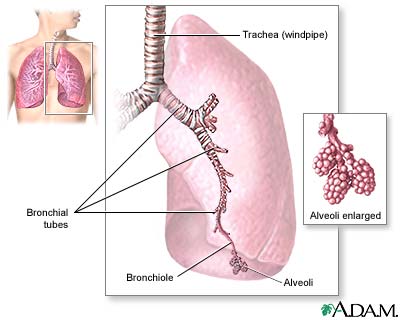
Click a word on the left and the definition will appear here:
Asthma: A chronic, inflammatory disorder of the airways where over-sensitive airways sometimes become too narrow. This tightness is “reversible” -- in other words it will relax at least somewhat either with or without medications. People are aware of the obstructed airways because of symptoms such as wheezing, breathing difficulties, coughing, or a sensation of chest tightness. People with asthma have very sensitive airways that are constantly on the verge of over-reacting to asthma triggers. Nevertheless, asthma can be treated effectively with the right medications, with the goal of maintaining normal activity levels without troublesome symptoms.

Click a word on the left and the definition will appear here:
Beta-agonists: Asthma drugs that relax the muscles around the bronchial tubes ("bronchodilators"), thus opening the airways or helping keep them open. There are two main types. The long-acting type is taken every day to prevent symptoms, often in combination with a steroid. This type includes salmeterol (Serevent) and formoterol (Foradil). The short-acting type is used for quick relief of symptoms during an asthma episode/attack. Albuterol is the most commonly used short-acting beta-agonist and is the ingredient in Accuneb, Alupent, ProAir, Proventil, and Ventolin. A purer form of albuterol, called levalbuterol, is now available (Xopenex). Pirbuterol (Maxair) is another short-acting beta-agonist. The long-acting type and the short-acting type of beta agonists are NOT interchangeable.Note: On November 18, 2005, the U.S. Food and Drug Administration (FDA) notified manufacturers of Advair Diskus, Symbicort inhalers, Foradil Aerolizer, and Serevent Diskus to update their existing product labels with new warnings and later approved new safety labeling and Medication Guides for patients. This was done to alert health care professionals and patients that these medicines may increase the chance of severe asthma episodes, and death when those episodes occur. All of these products contain long-acting beta2-adrenergic agonists (LABA). On February 18, 2010, the FDA changed its recommendation and stated that long-acting beta-agonists such as severent or formoterol should be used only in combination with inhaled steroids, and only for the shortest amount of time required to get symptoms under control. Even though LABAs decrease the frequency of asthma episodes, these medicines may make asthma episodes more severe when they occur. A Medication Guide with information about these risks will be given to patients when a prescription for a LABA is filled or refilled. See the FDA website for more information at www.fda.gov.
Click a word on the left and the definition will appear here:
Bronchial tubes: Airways in the lungs. There is one major branch going into each lung, and these then divide into many smaller branches.
Click a word on the left and the definition will appear here:
Bronchioles: The smallest airways in the lungs.
Click a word on the left and the definition will appear here:
Bronchoconstriction: This is when the muscles that wrap the airways constrict tighter and tighter, pinching the airways closed.
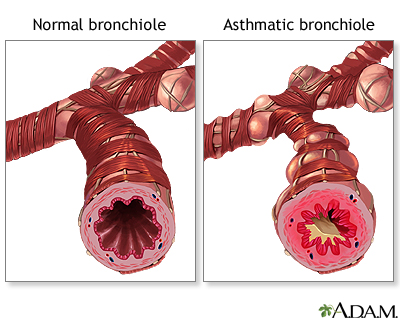
Click a word on the left and the definition will appear here:
Bronchodilators: Drugs that relax the muscles around the airways, thus opening the airways up. Some bronchodilators are used for QUICK RELIEF of symptoms during an asthma attack. Other bronchodilators are taken every day to PREVENT symptoms from occurring.
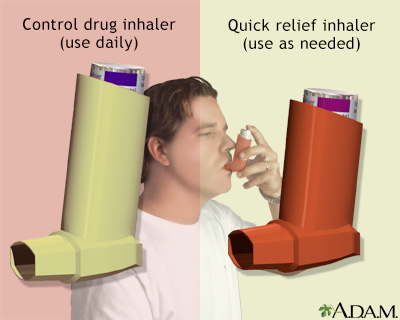
Click a word on the left and the definition will appear here:
Control drug: A drug that some people take on a daily basis to PREVENT asthma symptoms and asthma attacks.
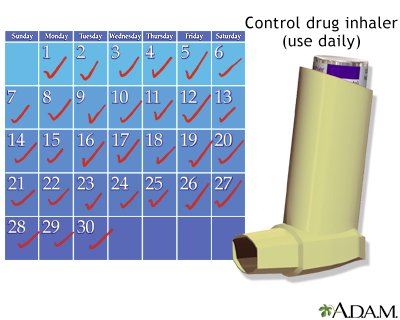
Click a word on the left and the definition will appear here:
Corticosteroids: The most common and effective drugs used for long-term daily control of asthma (prevention of symptoms). They are generally a doctor's first choice for daily medication to treat persistent asthma at all levels of severity. They are most frequently inhaled using a metered dose inhaler, dry powder inhaler, or nebulizer. However, they are sometimes given as pills or liquids in special cases, such as during asthma attacks. Corticosteroids primarily decrease or prevent inflammation.
Click a word on the left and the definition will appear here:
Cromolyn: An anti-inflammatory drug that may be used on a daily basis to prevent symptoms of asthma (particularly mild persistent asthma). An example of cromolyn is Intal.
Click a word on the left and the definition will appear here:
Dry Powder Inhaler: A small device similar to a metered dose inhaler, but where the drug is in powder form. The patient exhales out a full breath, places the lips around the mouthpiece, then quickly breathes in the powder. Dry powder inhalers do not require the timing and coordination that are necessary with MDIs.
Click a word on the left and the definition will appear here:
Holding chamber: See Spacer.
Click a word on the left and the definition will appear here:
Immunotherapy: A series of shots that help build up the immune system's tolerance to an asthma trigger.
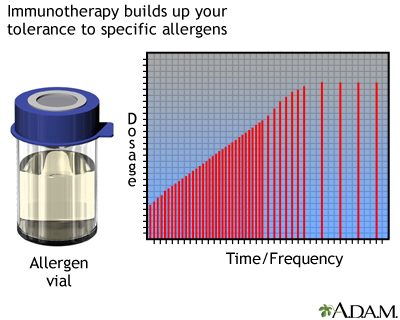
Click a word on the left and the definition will appear here:
Ipratropium bromide: A bronchodilator sometimes used for quick relief of asthma symptoms, often for people who do not tolerate beta-agonists. It is also used for people whose asthma is triggered by beta-blocker medication for the heart. A brand is Atrovent.
Click a word on the left and the definition will appear here:
Leukotriene modifiers: Control drugs in the form of tablets for patients with mild-to-moderate persistent asthma. For mild asthma, they are sometimes considered as an alternative to inhaled steroids. For moderate asthma, they may be considered as a supplement to inhaled steroids in place of long-acting beta agonists. They include monoleukast (Singulair), which has been approved for children age 12 months and older; zafirlukast (Accolate), which has been approved for age 5 years and older; and zileuton (Zyflo), which is approved for patients age 12 years and older.
Click a word on the left and the definition will appear here:
Metered Dose Inhaler: The most common device people use to take asthma medication. An MDI allows you to inhale a specific amount of medicine (a "metered dose"). It consists of a metal canister, which keeps the medication under pressure, and a plastic sleeve, which helps to release the medication. When you press the canister, medicine particles are propelled toward your throat where you can inhale them.
Click a word on the left and the definition will appear here:
Nebulizer: A device that creates a mist out of your asthma drug, which makes it easy and pleasant to breathe the drug into the lungs. The drug is placed into a small cup. Air from a small compressor converts the drug into an aerosol mist, which travels through a hose with a mouthpiece attached. By taking slow, deep breaths, the medicine is delivered into your lungs. Small children or others who cannot hold the mouthpiece tightly in their lips can wear a mask to maximize the effects of the medicine. Using a nebulizer is sometimes called a "breathing treatment."
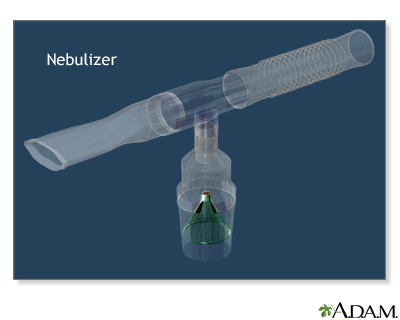
Click a word on the left and the definition will appear here:
Peak flow: A measurement of how well you can blow air out of your lungs. If your airways become narrow and blocked due to asthma, you can't blow air out as well, and your peak flow values drop. Peak flow is measured at home with a small, inexpensive plastic meter.
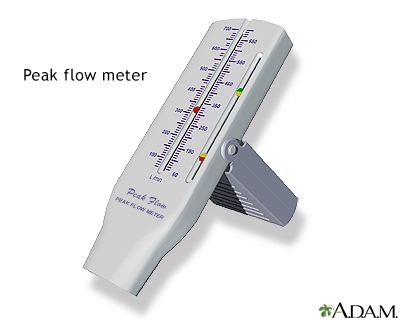
Click a word on the left and the definition will appear here:
Relief drug: A drug used as needed to relieve asthma symptoms during asthma attacks. Also called a rescue drug.
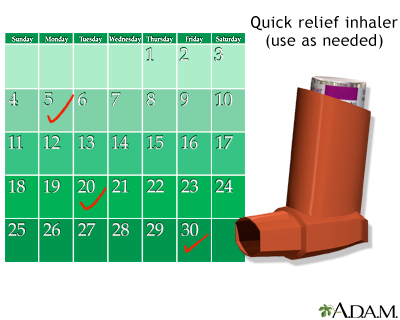
Click a word on the left and the definition will appear here:
Rescue drug: Relief drug.
Click a word on the left and the definition will appear here:
Sinusitis: An inflammation or infection of one or more sinuses. The sinuses are hollow air spaces located around the nose and eyes.
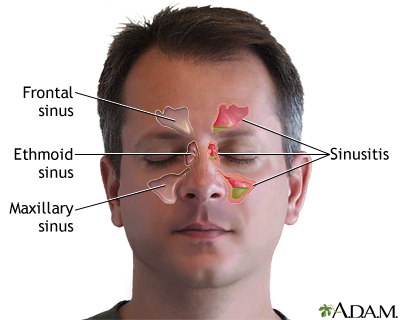
Click a word on the left and the definition will appear here:
Spacer: This works with your MDI to deliver medication more easily and effectively, and can reduce side effects. When you use an MDI by itself, more of the medicine is left in your mouth and throat, wasting your dose and causing an unpleasant aftertaste. Spacers hold the "puff" of medicine between you and the MDI, so that you can inhale it slowly and more completely. As a result, more of the medicine gets into your airways. A comfortable mask can be added to the spacer for small children or others who have difficulty maintaining a good lip seal on the mouthpiece. Spacers are also called holding chambers.
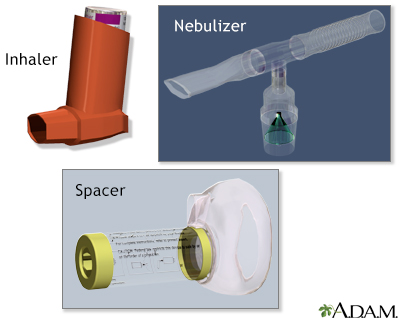
Click a word on the left and the definition will appear here:
Spirometry: The most important test for diagnosing asthma. A spirometer is an instrument that measures the maximum volume you can exhale after breathing in as much as you can. The total volume you exhale is called "forced vital capacity," or FVC. The spirometer also measures the volume of air you exhale in the first second. (This is referred to as "forced expiratory volume in one second," or FEV1.) In general, the more air you breathe out during the first second of a full exhalation, the better. Most people with asthma use a spirometer at the doctor's office during examinations and checkups. Small spirometers are available for home use, although peak flow meters are more appropriate for most people.

Click a word on the left and the definition will appear here:
Steroids: See Corticosteroids.
Click a word on the left and the definition will appear here:
Theophylline: This drug is sometimes used to help control mild-to-moderate persistent asthma, especially to prevent nighttime symptoms. However, it requires routine blood testing to make sure that the drug is within safe levels. The drug works by relaxing the muscles of your bronchial tubes. Uniphyl is a brand name of theophylline.
|
Review Date:
6/29/2012 Reviewed By: Allen J. Blaivas, DO, Clinical Assistant Professor of Medicine UMDNJ-NJMS, Attending Physician in the Division of Pulmonary, Critical Care, and Sleep Medicine, Department of Veteran Affairs, VA New Jersey Health Care System, East Orange, NJ. Review provided by VeriMed Healthcare Network. Previoulsy reviewed by David A. Kaufman, MD, Section Chief, Pulmonary, Critical Care & Sleep Medicine, Bridgeport Hospital-Yale New Haven Health System, and Assistant Clinical Professor, Yale University School of Medicine, New Haven, CT. Review provided by VeriMed Healthcare Network. (6/1/2010) |

